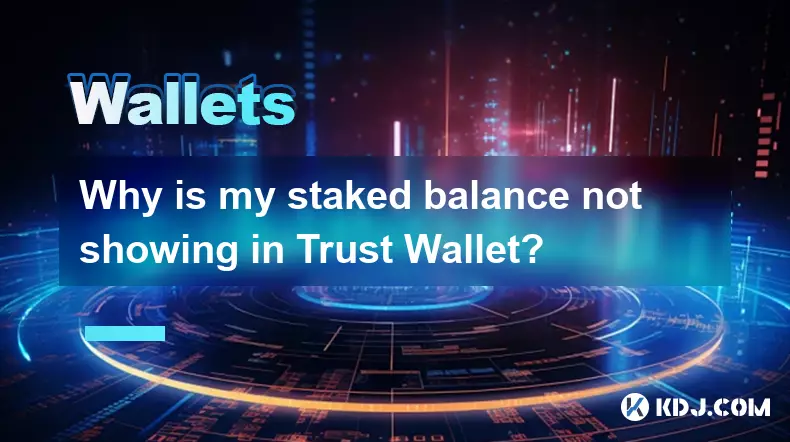-
 bitcoin
bitcoin $120167.907534 USD
1.27% -
 ethereum
ethereum $4468.611945 USD
2.53% -
 xrp
xrp $3.013607 USD
1.80% -
 tether
tether $1.000549 USD
-0.01% -
 bnb
bnb $1092.592149 USD
6.28% -
 solana
solana $231.391244 USD
4.59% -
 usd-coin
usd-coin $0.999699 USD
-0.04% -
 dogecoin
dogecoin $0.259020 USD
4.30% -
 tron
tron $0.342747 USD
0.34% -
 cardano
cardano $0.860977 USD
1.07% -
 hyperliquid
hyperliquid $50.155412 USD
5.34% -
 chainlink
chainlink $22.637678 USD
0.46% -
 ethena-usde
ethena-usde $1.000528 USD
-0.07% -
 avalanche
avalanche $30.613779 USD
-0.07% -
 stellar
stellar $0.403905 USD
0.94%
How to verify if your Trezor device is genuine?
Using a genuine Trezor ensures your crypto stays secure—counterfeit devices can steal funds through malware, fake firmware, or tampered hardware.
Sep 12, 2025 at 05:55 pm

Why Authenticity of Your Trezor Matters
1. A genuine Trezor device ensures your private keys remain secure and under your control. Counterfeit hardware wallets may come preloaded with malware or compromised firmware, putting your cryptocurrency assets at risk. The decentralized nature of blockchain means there is no central authority to recover lost funds, making prevention critical.
2. Using an authentic Trezor protects against supply chain tampering. If the device is altered before it reaches you, attackers could gain access to your wallet without your knowledge. Genuine devices are sealed and verified through multiple checkpoints during manufacturing and shipping.
3. Only original Trezor units receive official firmware updates from SatoshiLabs. Fake versions may mimic the interface but lack the security patches and improvements delivered through legitimate software channels.
4. The cryptographic integrity of your transactions depends on the authenticity of the hardware. A compromised device might alter transaction details, redirecting funds to attacker-controlled addresses while displaying a correct destination on screen.
5. Purchasing a counterfeit not only risks your funds but also undermines trust in the broader crypto ecosystem. It encourages malicious actors to exploit user negligence and weak distribution practices.
Steps to Verify Your Trezor’s Authenticity
1. Buy only from the official Trezor website or authorized resellers. Check the list of approved distributors on trezor.io. Avoid third-party marketplaces like eBay, Amazon, or local crypto meetups where tampering is more likely.
2. Inspect the packaging. Genuine Trezor devices come in tamper-evident sealed boxes with holographic stickers. If the seal is broken or missing, do not use the device. Compare the packaging design with images on the official site.
3. Verify the device’s serial number. Each Trezor has a unique serial number printed on the box and displayed during the initial setup. Enter this number on the Trezor verification page at trezor.io/start to confirm its legitimacy.
4. Set up the device using the official Trezor Suite application. Never use third-party software. During setup, the device will generate a recovery seed. Ensure this process happens directly on the device screen, not on your computer.
5. Cross-check the bootloader and firmware signatures. Trezor uses cryptographic signatures to validate firmware integrity. If the device shows a warning about unsigned firmware, stop setup immediately—this indicates a potential clone.
Red Flags Indicating a Fake Trezor
1. The device asks you to enter a recovery seed during setup instead of generating one. Authentic Trezor wallets always generate the seed offline on the device itself.
2. The interface looks slightly off—misaligned text, low-resolution display, or incorrect button layout. Counterfeits often replicate the design poorly.
3. The USB cable is permanently attached or of unusually low quality. Genuine Trezor models use standard detachable cables.
4. The device connects and operates without requiring firmware verification or displays unofficial branding or logos.
5. You are prompted to download software from a non-trezor.io domain. Phishing sites often mimic the real Trezor interface to steal recovery phrases.
Frequently Asked Questions
Can I verify a second-hand Trezor?
Yes. Reset the device to factory settings, then go through the setup process using Trezor Suite. Verify the serial number on trezor.io/start. Ensure no prior data remains and that the firmware is up to date before use.
What should I do if my Trezor fails verification?
Stop using the device immediately. Contact Trezor support with the serial number and photos of the packaging and device. Do not enter any recovery seed or personal information into the unit.
Is the recovery seed stored anywhere by Trezor?
No. The recovery seed is generated and stored solely on the device. Trezor does not have access to it. If someone claims they can recover your seed using the serial number, it is a scam.
How does Trezor protect against physical tampering?
Trezor devices use tamper-resistant casing and secure elements in select models. Any physical intrusion typically triggers data erasure. The initial seal and holographic stickers also serve as visual indicators of unauthorized access.
Disclaimer:info@kdj.com
The information provided is not trading advice. kdj.com does not assume any responsibility for any investments made based on the information provided in this article. Cryptocurrencies are highly volatile and it is highly recommended that you invest with caution after thorough research!
If you believe that the content used on this website infringes your copyright, please contact us immediately (info@kdj.com) and we will delete it promptly.
- BlockDAG, DOGE, HYPE Sponsorship: Crypto Trends Shaping 2025
- 2025-10-01 00:25:13
- Deutsche Börse and Circle: A StableCoin Adoption Powerhouse in Europe
- 2025-10-01 00:25:13
- BlockDAG's Presale Buzz: Is It the Crypto to Watch in October 2025?
- 2025-10-01 00:30:13
- Bitcoin, Crypto, and IQ: When Genius Meets Digital Gold?
- 2025-10-01 00:30:13
- Stablecoins, American Innovation, and Wallet Tokens: The Next Frontier
- 2025-10-01 00:35:12
- NBU, Coins, and Crypto in Ukraine: A New Yorker's Take
- 2025-10-01 00:45:14
Related knowledge

How to get the Trust Wallet browser extension?
Oct 01,2025 at 12:37am
How to Access the Trust Wallet Browser Extension1. Visit the official Trust Wallet website through a secure internet connection. Navigate to the downl...

How to interact with a DApp using Trust Wallet?
Oct 02,2025 at 10:00pm
Connecting Trust Wallet to a DApp1. Open the Trust Wallet app on your mobile device and ensure your wallet is unlocked with access to your assets. Nav...

How to scan a QR code with Trust Wallet?
Oct 02,2025 at 03:37pm
Understanding QR Codes in Trust Wallet1. QR codes are widely used in cryptocurrency applications to simplify transaction processes. Trust Wallet lever...

Why is my staked balance not showing in Trust Wallet?
Oct 01,2025 at 12:54am
Understanding Decentralized Exchanges in the Crypto Ecosystem1. Decentralized exchanges (DEXs) operate without a central authority, allowing users to ...

How to revoke smart contract access in Trust Wallet?
Oct 01,2025 at 12:54pm
Understanding Smart Contract Access in Trust Wallet1. Smart contracts are self-executing agreements built on blockchain networks, commonly used in dec...

Why is the Trust Wallet DApp browser not working?
Oct 01,2025 at 05:36am
Common Causes of Trust Wallet DApp Browser Issues1. The DApp browser within Trust Wallet may fail to load due to connectivity problems. A weak or unst...

How to get the Trust Wallet browser extension?
Oct 01,2025 at 12:37am
How to Access the Trust Wallet Browser Extension1. Visit the official Trust Wallet website through a secure internet connection. Navigate to the downl...

How to interact with a DApp using Trust Wallet?
Oct 02,2025 at 10:00pm
Connecting Trust Wallet to a DApp1. Open the Trust Wallet app on your mobile device and ensure your wallet is unlocked with access to your assets. Nav...

How to scan a QR code with Trust Wallet?
Oct 02,2025 at 03:37pm
Understanding QR Codes in Trust Wallet1. QR codes are widely used in cryptocurrency applications to simplify transaction processes. Trust Wallet lever...

Why is my staked balance not showing in Trust Wallet?
Oct 01,2025 at 12:54am
Understanding Decentralized Exchanges in the Crypto Ecosystem1. Decentralized exchanges (DEXs) operate without a central authority, allowing users to ...

How to revoke smart contract access in Trust Wallet?
Oct 01,2025 at 12:54pm
Understanding Smart Contract Access in Trust Wallet1. Smart contracts are self-executing agreements built on blockchain networks, commonly used in dec...

Why is the Trust Wallet DApp browser not working?
Oct 01,2025 at 05:36am
Common Causes of Trust Wallet DApp Browser Issues1. The DApp browser within Trust Wallet may fail to load due to connectivity problems. A weak or unst...
See all articles










































































